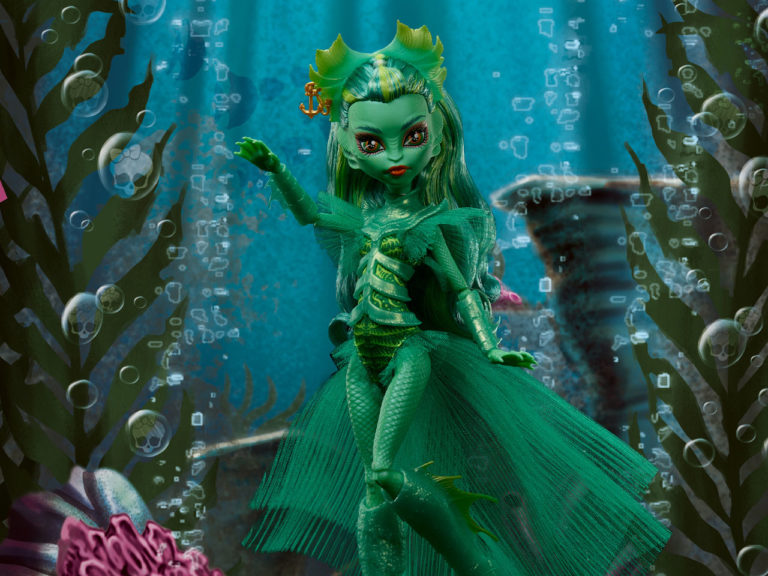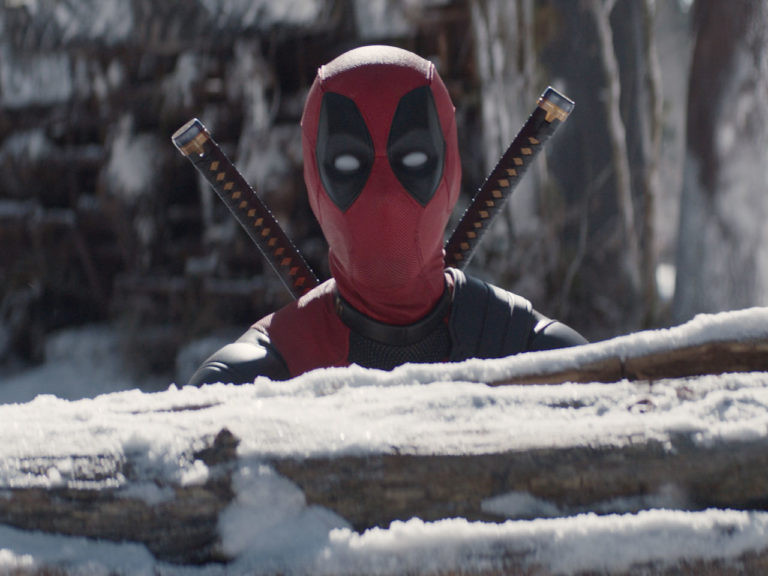
Like its immediate predecessor, Batman/Superman Volume 3 is a collection of several self-contained stories. One serves as a New 52 origin story for The Atom (or at least for when Ray Palmer started calling himself that), one ties into Doomed, and the last two tie in (somewhat) to Greg Pak’s original arc for the series.
What’s included
Inside, you’ll find six issues of Batman/Superman, specifically #10-15. Here are the stories:
- “Enter the Microverse”, from Batman/Superman #10
- “Danger Zone” (Doomed tie-in), from Batman/Superman #11
- “Second Chance”, from Batman/Superman #12
- “Forgotten Heroes Part 1: Eye of Satanus”, from Batman/Superman #13
- “Forgotten Heroes Part 2: Blank Slate”, from Batman/Superman #14
- “Forgotten Heroes Part Conclusion: Forget-Me-Not”, from Batman/Superman #15
Enter the Microverse
Written by Jeff Lemire, with artists Karl Kerschl (pencils and inks), Scott Hepburn (pencils and inks), and Gabe Eltaeb (colors), this single-issue story finds Superman seeking out the help of Ray Palmer, renowned expert in matter reduction and shrink technology. Batman has entered a coma after a trip to space, and Superman’s super vision suggests that the problem is a microscopic one. A trip into the Bat-brain in miniature, fist-fights with hilarious villains, and a view into the machinations of everyone’s favorite little girl Father Time (yes, S.H.A.D.E. is in this book!) make this one an enjoyable ride.

This story may not have much enduring value, but it has something that this book has lacked in previous volumes: fun. Even when Pak was (likely) trying to make things fun back at the beginning of Volume 2, his characters came off as somewhat irritating, and the rotated viewport of that installment dragged any hope of a good time into the grave. Lemire’s characters, on the other hand, are entertaining and likable–even when they’re ridiculous, throwaway villains from a microscopic civilization that’s become embedded in Batman’s brain:

Kerschl and Hepburn don’t turn in the cleanest, most consistent work, yet their styles both work well for the tone of the story. There’s lots of nice action, and the characters are alive–drawn with very effective facial expressions, gestures, and posture. True to form, Gabe Eltaeb’s colors are excellent, showing plenty of variation within individual pages and throughout the book. It’s easy to underestimate just how much a colorist does for a book because their skill is often felt more in an impression left rather than in obvious details. Here, Eltaeb’s variety moves the story along quite well on its own, establishing location and mood, and preventing the art from stagnating.
As I said, “Enter the Microverse” doesn’t really provide anything more than good fun, but that’s enough for a single-issue story, and it’s a welcome change from the normal feel and aesthetic of the series.
Danger Zone
A tie-in for the big Superman: Doomed event that took over everything Superman-related for a bit back in 2014, Batman/Superman #11 could just as well be called “Batman/Wonder Woman”, as it picks up with Bruce and Diana following clues left by Clark that lead them–together–into the Phantom Zone. Inside, they investigate rifts in the zone that appear to be related to Doomsday’s escape. Along the way, they encounter a host of Superman’s enemies, including Non, Mongul, and Xa-Du, and–with some help–fight their way out of the zone with a potential solution to Clark’s problems.

As a Doomed tie-in, this is essential reading. As the second chapter in a Batman/Superman trade, however, it raises far more questions than it answers, and you’ll never find out more unless you read the event. Even so, there a number of things to commend. In spite of the dangers–of which he is no doubt aware–Batman fearlessly steps through a portal into the Phantom Zone before Wonder Woman. If either of them is more likely to survive a hostile environment based purely on physiological grounds, it would be Diana, and yet it is Bruce who plunges himself right into danger. This might be the single greatest Batman character moment from Pak’s entire run, so I think it’s worth pointing out and savoring. There are some other interesting concepts explored–like a “zone within the Zone”–and the very notion of a Bats and Wonder Woman team-up is awesome all by itself.
There’s a large assortment of artists working pencils and inks, so it would be difficult for me to say exactly who’s doing what. And so I’ll just say, generally, that the work is as inconsistent as you might expect with so many cooks in the kitchen. Most of the artists do a fairly good job with their figures, and one of them has the amazing spread of the Phantom Zone that you see above; yet, some of the panels are just plain ugly, and the various styles are different enough so as to be distracting. Hi-Fi is the sole colorist, which helps to at least keep the general environment of the Zone stable throughout, but it’s unfortunately not enough to overcome the jarring transitions from artist to artist.

GRRAAAA!, indeed…
A better-than-average script from Pak joins an unfortunately muddied body of artwork to produce a story that is better than most, but not uniformly memorable. Its place in the Doomed event would likely make it work better for most readers (as it does for me), especially because the plurality of artists becomes easier to accept in that context, where shared duties are the norm.
Second Chance
If you’ve read James Robinson and Nicola Scott’s Earth 2 #1, much of the “Second Chance” story will feel familiar. Distressed by Batman and Superman’s recent “memory echoes” from Batman/Superman Volume 1, Kaiyo the Chaosbringer (of Apokolips) returns to continue toying with Bruce and Clark. Like before, she transports them to Earth 2, hopeful that they can change the fate of that universe’s doomed Earth. Over the course of the tale, our heroes are tempted to intervene to save the people they care about, but ultimately play witness to more tragedy than success.
As with the previous story, there are just too many artists here. Some of the panels are alright, but others are just so-so (and at times downright funky). Jason Wright’s colors are pretty standard, but that’s actually a good thing in this case; the stability of clean, well-chosen colors helps to offset–even if just a little bit–the poor quality of much of the artwork.

Funky Lois nevertheless has a sweet gun.
Fortunately, Pak’s script carries quite a bit of emotional weight. Just seeing the death of the Earth 2 Trinity hurts, but seeing its affect on “our” Bruce and Clark drives it home all the more. Clark’s response to seeing his Earth 2 parents is especially poignant–particularly in how it consists largely in so-called mundane details about Jonathan and Martha. This focus on who they are outside of the conflict at hand makes the conflict itself far more interesting, and it makes their impending end a far more distressing thing.
While the artwork unfortunately drags this down a bit, Pak does an excellent job making me care about what’s happening. This is one of the few stories in this entire series that I could actually see myself revisiting.
Forgotten Heroes
Far from being finished with Bruce and Clark, Kaiyo enlists the help of Lord Satanus, “Ruler of Earth’s Dark Realm”. Actually, it would be more accurate to say “Kaiyo gets herself locked in a cage but still manages to use Satanus to put the World’s Finest through another ridiculous exercise.” The central question is this: what sort of people would Batman and Superman be if they had none of their memories, but all of their abilities? Supes and Selina, Batman and Batgirl Lois Lane, and the return of Mangubat (see Volume 1) mark the occasion for the end of what I’ll call Pak’s “Kaiyo Saga”.

Jae Lee returns to the interiors for #13, and he’s definitely welcome after the artistic inconsistencies of the previous two stories. I’m not crazy about the way he chooses to render faces, but his overall aesthetic–particularly his Gotham–is beautifully shadowed and haunting. Unfortunately, the next two installments go back to the multiple artist paradigm, and they suffer for it (although, to be fair, #14 feels closer to a single artistic vision than does #15).
Pak once again has an intriguing premise, but it is also once again executed in a way that creates a fairly forgettable story. It doesn’t help that I’ve read everything in this series that follows, as the events of this arc (and the events of the entire series leading up to this arc) have no consequence in what comes later. And so what could be a foreboding setup for future dangers instead reads like Pak is just having some meaningless fun with us, in much the same way that Lord Satanus and Kaiyo are having some meaningless fun with Bruce and Clark.

Perhaps the most interesting component of this particular story is a few pages in which Bruce–who, if you’ll remember, has none of his memories–demands that Alfred tell him about what happened to turn him into the Batman. Alfred resists, but Bruce insists. If this sounds awfully familiar, have a look at Scott Snyder’s final arc on the Batman book. There’s no pure copying going on, but Snyder either borrowed heavily from the tone of this exchange in Batman/Superman, or he (and his editors) were completely ignorant of what had been going on in another Bat-related book just a year prior. Neither scenario is especially admirable.
“Forgotten Heroes” brings a close to Greg Pak’s initial big idea for Batman/Superman. I wouldn’t say he goes out with a whimper, but it’s not quite a bang, either. The artwork is confused by multiple conflicting styles (particularly once you get to the final installment), and the consequence-free conclusion of the story makes it pretty unappealing as part of the larger series.
Bonus material
In addition to Batman/Superman #10-15, this volume includes inks-only versions of each cover, as well as a variant cover gallery.
Value: Sale price
I’m not crazy about Pak’s Batman and Superman, but this volume is of comparable quality to the first in the series, which is to say it’s not bad. I’d be hesitant to pay full price, but you can probably find it for about ten bucks used (with shipping) on Amazon, and you might be able to do better at a second-hand store.
Overall
There’s nothing here that I find terribly interesting. It’s a fun one-time read, and the quality of the art is fairly consistent; it’s never great (and there are some funky panels), but it’s pretty good most of the way through. Lemire’s Atom story at the beginning stands out as being especially fun and enjoyable, with perhaps better characterizations of our heroes than we typically get from Pak. The rest of the book explores some interesting questions about Bruce and Clark’s identities, but I ultimately feel like they would be handled better by a different writer. For me, Batman/Superman Volume 3 is not great, but not bad. It’s just okay.
SCORE: 5.5/10


